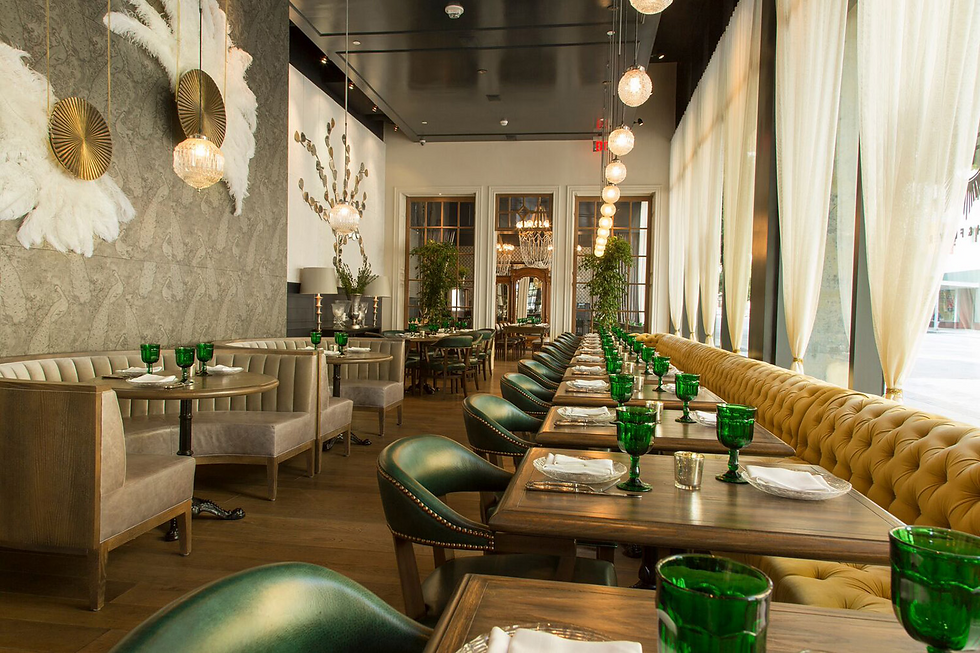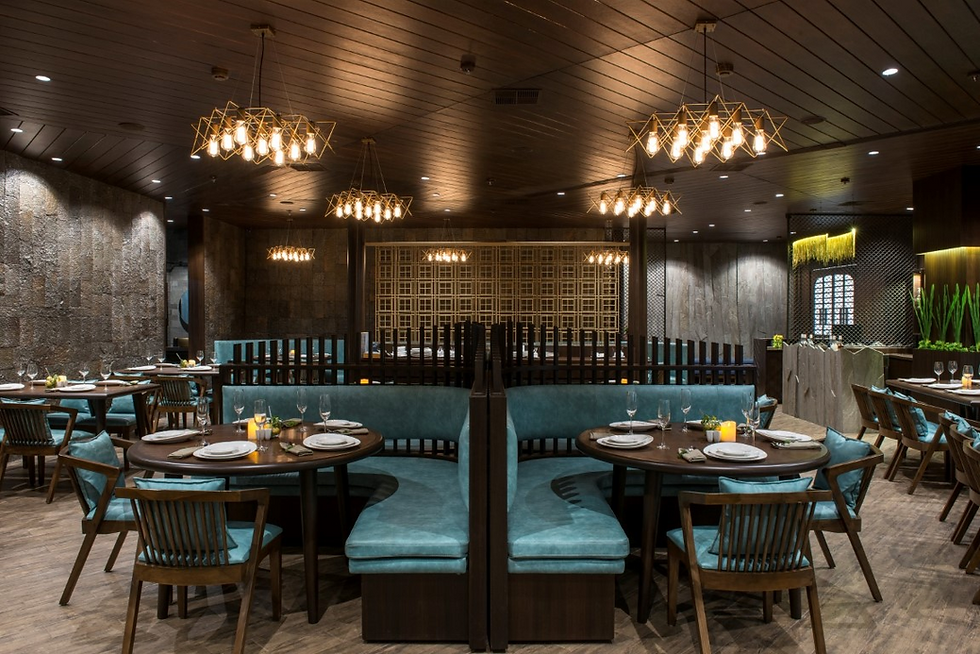An Inside Look into Restaurant Designs
- Nishita Chopra
- Aug 1, 2021
- 3 min read
Isn't it a dream for every restaurant owner to have a breathtaking gorgeous space that people flock to? As an architect, it thus becomes their responsibility to explain the design narrative. Some of the elements in restaurant design architecture are meant to go unnoticed in affecting the diner's behaviour and moods. The customer becomes the most important factor when it comes to the design of a restaurant; what attracts them there and makes them come back.

The Design Narrative
There are two things initially considered in restaurant design. The concept and the story behind the design. It then becomes important to ensure this strong narrative in every detail is carried through the design, ensuring that their parts are played without contriving or overusing in the design. For instance, in a Punjabi Dhaba, it is very common to find warm copper pans and authentic serving dishes to offer the customer a rich dining experience without overdoing any detail. The restaurant's success needs to research their identity and stick to the intricate elements that define who they are.

Circulation and Operation of Restaurant Interiors
It is pertinent to figure out the logical functionality of a restaurant and service circulation for a smooth flow of movement. The location of all elements, circulation spaces to the seating areas, all ultimately contribute to the operations of a space.
The dining area takes up 60% of the space allotment while the kitchen, storage, and restrooms take up 40% of the remaining space. There should be ample spacing between the tables for comfortable movement. A fine dining restaurant requires 20 ft per person while for fast food restaurant needs a 10ft per person space requirement.
It is important to balance privacy and layout openness for the staff to be able to anticipate the diner's needs while also offering them the required space between orders.
It is now crucial to give the diners an inclusive experience and smooth foot traffic. Hence, it is ideal to place the hostess desk at the entrance and the server stations in the centre of the dining area rather than on one corner.
Restrooms must be easy to locate, as asking for directions can sometimes be uncomfortable. If they are located behind hallways, it is essential to provide signs for convenience. Restrooms are also never placed beside the kitchens for sanitary reasons. And also to ease the mind, as the patrons might think that the food might be dirty if the kitchen is right beside the restrooms.
When it comes to restaurant appeal. Apart from providing aesthetics, there should be an abundance of windows used too to allow natural light during the day. Lighting schemes designed must be safe, low maintenance, and easy to control while meeting the highest energy standards. Lighting is extremely strategically placed over all dining tables in the restaurants to make the food served look even more appealing. A well-lit corner is always more used than a dingy corner in a restaurant. Thus, ultimately keeping the restaurant in heavy customer demand.
No diner likes to wait for food for long periods. Service needs to be quick and efficient, hence flow for patrons and staff is crucial. The hostess should always be near the entrance and at a side to allow customers to leave unhampered while the new ones are being assisted. Service stations should be placed in the centre of a few tables clubbed together to speed up delivery and order taking. While kitchens should always be in the back or at a side of the dining space to give the dining hall an uninterrupted flow movement.

Ambience
Architecture plays a big part in the ambience of the restaurant and this affects the diner's behaviour.
The entrance of the restaurant carries utmost weightage in making a good impression on the prospective diner. Thus they are amply lit with statement showpieces on display with a tasteful choice of flooring and tiling to make the space seem more welcoming and warm. It is interesting to note that some establishments with multiple entrances create different yet similar inviting experiences, offering an intimate invitation to the goodies that await.
There is heavy use of low tempo music, dim lights, and warm colours, all inviting the customer to relax and linger for a long time till ordering dessert, coffee, or that extra glass of wine. This behaviour is further encouraged by placing seats that are well supported and comfortable, making the patron find respite in being seated for longer duration.
This is especially noticeable in fine dining restaurants where one keeps ordering and sitting for a longer duration while in the fast-food restaurant, where the focus is more fast turnover, so the chairs are just shy of comfortable.



Comments